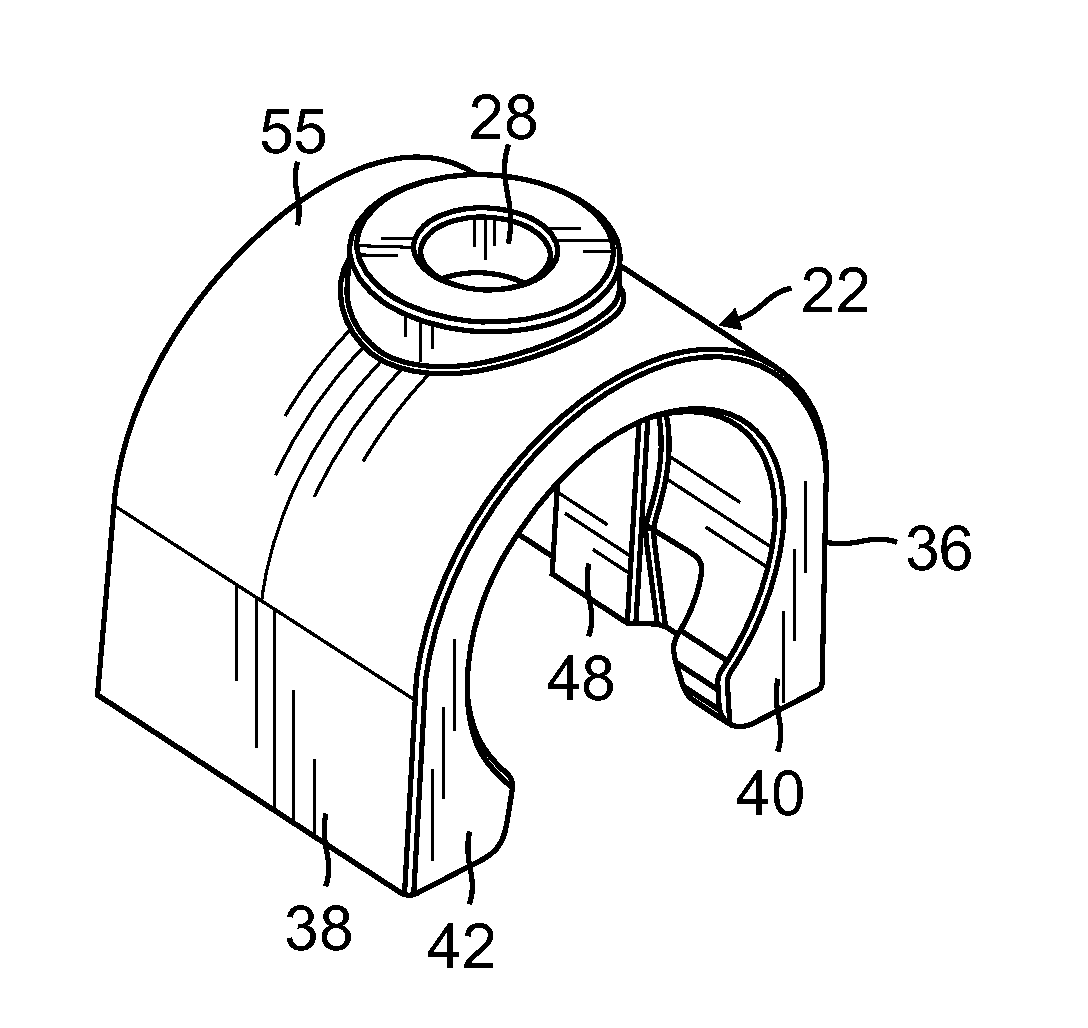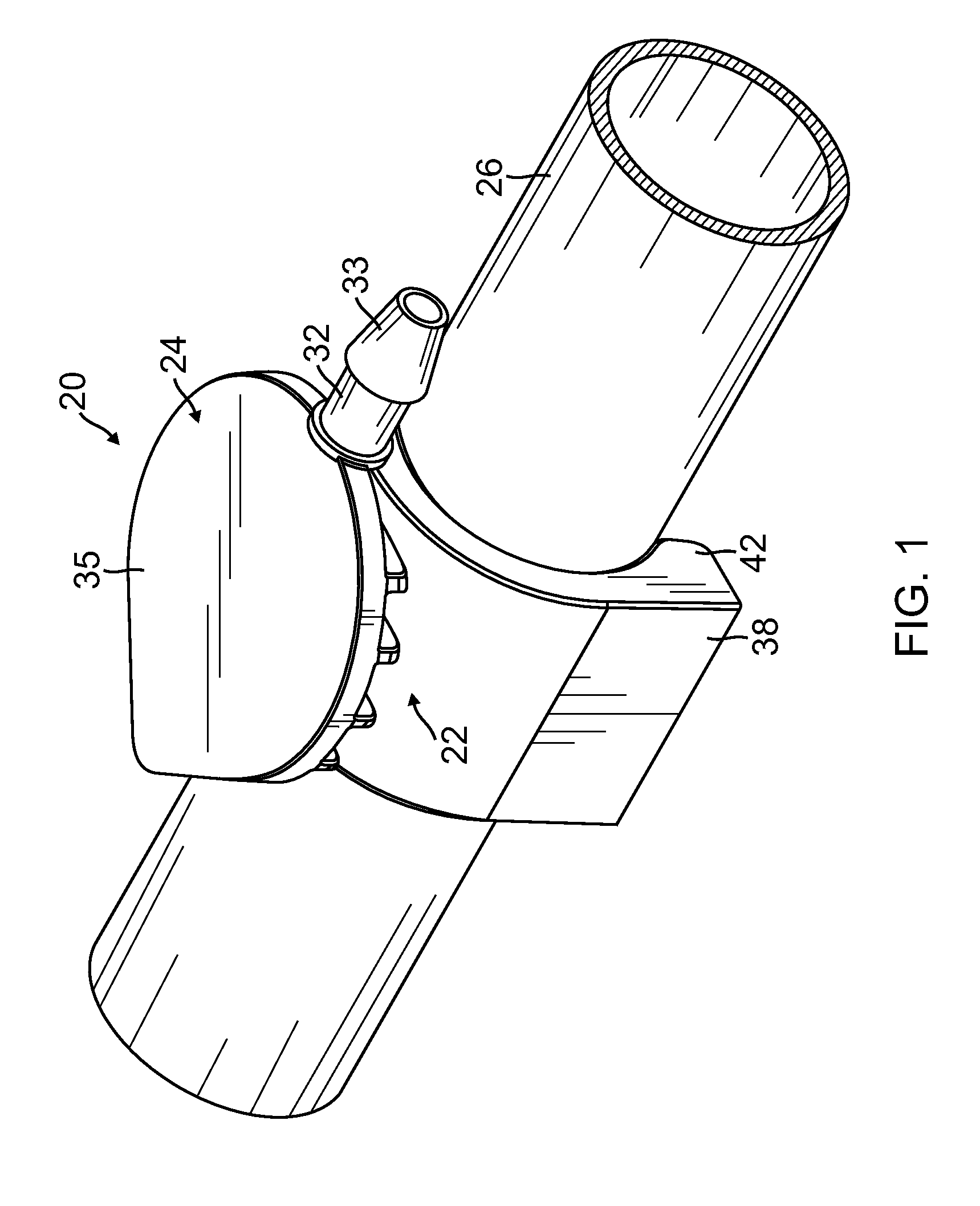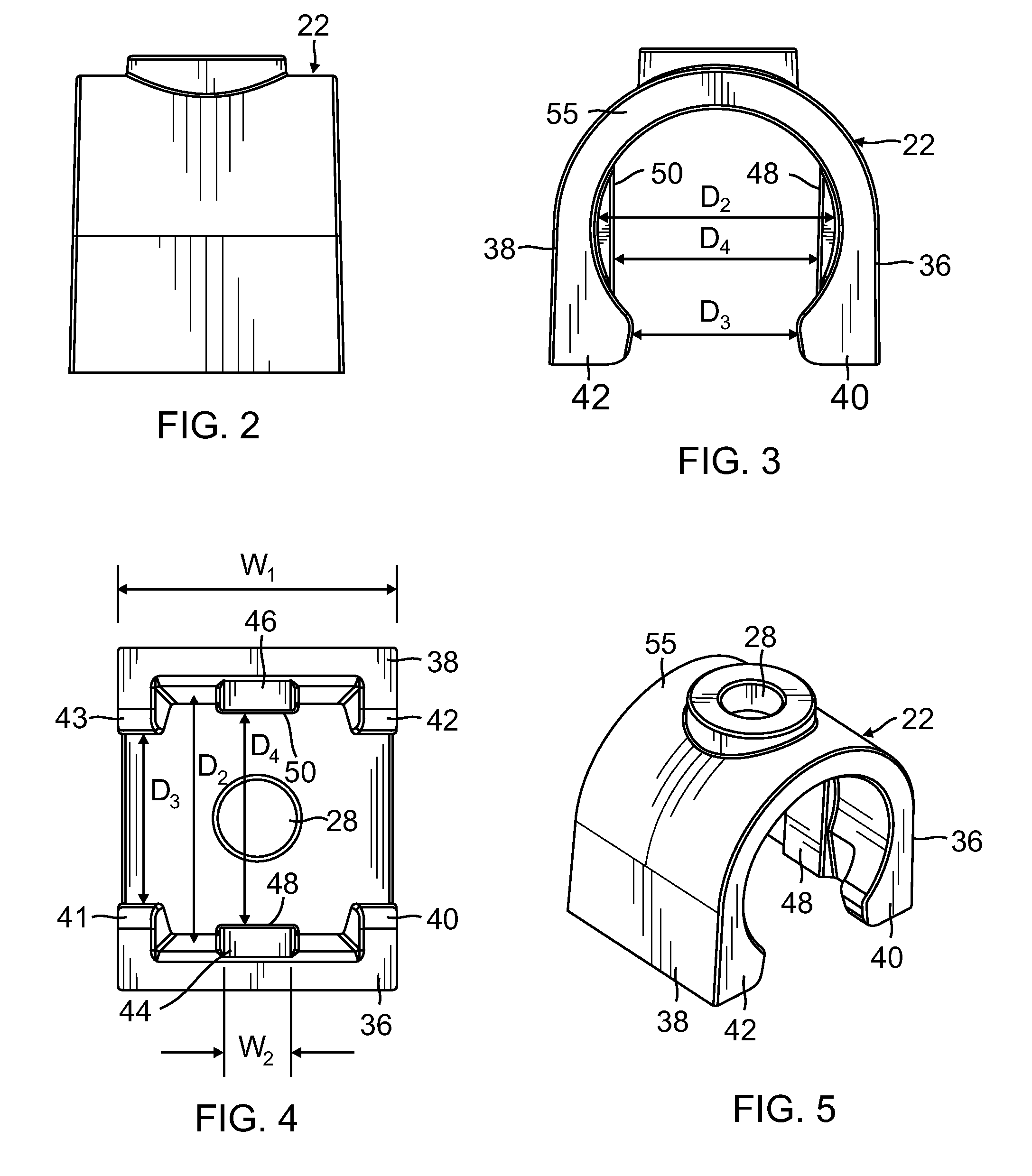Clamp and spike for flexible conduit
a flexible conduit and spike technology, applied in the direction of pipe connection arrangements, spraying apparatus, liquid spraying apparatus, etc., can solve the problems of limited amount of water available, inability to insert the hollow spike into the existing water conduit, and difficulty in ensuring the safety of the pipe,
- Summary
- Abstract
- Description
- Claims
- Application Information
AI Technical Summary
Benefits of technology
Problems solved by technology
Method used
Image
Examples
Embodiment Construction
[0026]With reference to the drawings, a preferred embodiment of a clamp and spike combination 20 having features of the present invention is described. FIG. 1 exemplifies the final configuration of the novel clamp 22 and spike 24 as used in combination 20 under the system and method of the present invention. Both clamp and spike are seen in conjunction with a water conduit 26, into which a portion of the spike 24 has been inserted through an opening in the clamp, while the clamp 22 has been mounted on the conduit as described herein below.
[0027]With reference to the drawings, the preferred configuration of the spike 24 of the present invention (best seen in FIGS. 9 and 10) includes a hollow inlet rod 30 with a sharpened tip 31 adapted for penetrating or expanding a hole in a water conduit 26. The spike also includes a hollow outlet rod 32 (FIGS. 1 and 6) with a barbed tip 33, the outlet rod preferably extending at a substantially right angle to the inlet rod 30. Substantially, in th...
PUM
| Property | Measurement | Unit |
|---|---|---|
| diameter | aaaaa | aaaaa |
| angle | aaaaa | aaaaa |
| diameter | aaaaa | aaaaa |
Abstract
Description
Claims
Application Information
 Login to View More
Login to View More - R&D
- Intellectual Property
- Life Sciences
- Materials
- Tech Scout
- Unparalleled Data Quality
- Higher Quality Content
- 60% Fewer Hallucinations
Browse by: Latest US Patents, China's latest patents, Technical Efficacy Thesaurus, Application Domain, Technology Topic, Popular Technical Reports.
© 2025 PatSnap. All rights reserved.Legal|Privacy policy|Modern Slavery Act Transparency Statement|Sitemap|About US| Contact US: help@patsnap.com



